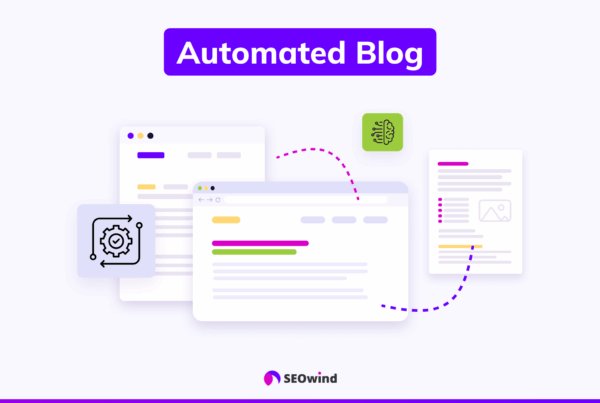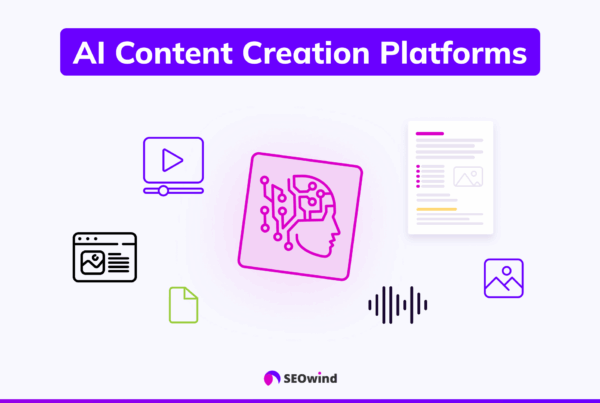The line between machine-generated and human-crafted content is becoming increasingly blurred. As AI advances, it’s now possible to convert AI-generated text into content that reads as if it was written by you or me.
What is an AI Human Converter?
The AI Human Converter is a tool that seamlessly transforms AI-produced text, making it indistinguishable from human writing. These advanced converters leverage cutting-edge technologies, such as machine learning and natural language processing, to analyze and modify AI-generated text. The primary goal is to enhance the content’s readability, coherence, and overall quality, making it more engaging and relatable to human readers.

Using sophisticated algorithms, these converters can identify and correct grammatical errors, improve sentence structure, and even infuse the text with a more natural and conversational tone. AI Human Converters bridge the gap between the efficiency of AI-generated content and the authenticity of human-written text, offering a powerful solution for businesses, content creators, and individuals seeking to optimize their written communications.
What AI Human Converters Do: A Detailed Explanation
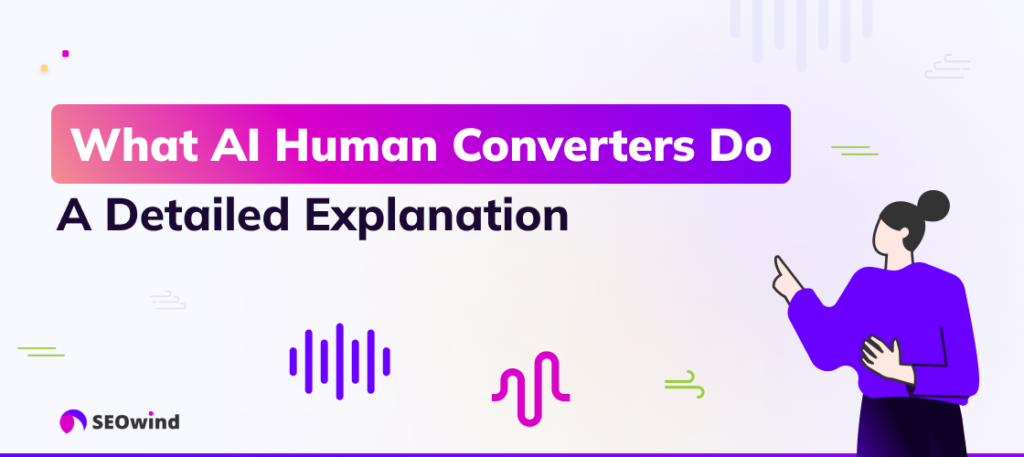
When you use these tools to convert AI-generated text to human text, they perform a series of complex operations behind the scenes. First, the converter assesses the structure and flow of the AI-produced content, identifying areas that may seem unnatural or disjointed to a human reader. It then restructures sentences and paragraphs to create a more logical and engaging narrative.
Next, the AI human converter focuses on the language and tone of the text. It identifies and replaces any awkward or robotic-sounding phrases with more natural, conversational alternatives. The tool also adjusts the vocabulary and sentence complexity to match the intended audience and purpose of the content.
Moreover, these converters can humanize AI text free of charge, making them accessible to a wide range of users. They employ sophisticated natural language processing (NLP) techniques to understand the context and meaning behind the words, ensuring the original message is preserved while enhancing its human-like qualities.
Some advanced AI human converters even incorporate emotion and sentiment analysis capabilities. They can detect the intended emotional tone of the AI-generated text and make subtle adjustments to the language and phrasing to better convey those emotions. This feature is particularly valuable for content that aims to connect with readers on a deeper level, such as creative writing or persuasive marketing copy.
The Technology Behind AI to Human Text Conversion
AI human converters rely on a combination of advanced technologies to seamlessly transform AI-generated text into human-like content. Machine Learning (ML) and Natural Language Processing (NLP) are the two primary technologies powering these tools. Let’s discuss how these technologies work together to create an efficient and effective process.
Machine Learning
ML is a subset of AI that enables computer systems to learn and improve from experience without being explicitly programmed. In the context of AI human converters, ML algorithms are trained on vast datasets of human-written text to identify patterns, structures, and linguistic nuances that make the content sound natural and engaging.
These algorithms learn to recognize the characteristics of human language, such as sentence structure, grammar, vocabulary, and tone. By analyzing millions of examples, ML models can then generate text that mimics human writing style and preferences.
Natural Language Processing
NLP is another critical component of AI human converters and a branch of AI that focuses on the interaction between computers and human language. It enables machines to understand, interpret, and generate human language in a meaningful and contextually relevant way.
NLP techniques used in AI-to-human text conversion include:
- Tokenization: Breaking down the text into smaller units called tokens, such as words or phrases, to analyze the structure and meaning of the content.
- Part-of-Speech Tagging: Identifying the grammatical role of each word in a sentence, such as nouns, verbs, adjectives, and adverbs, to ensure proper sentence structure and coherence.
- Named Entity Recognition: Identifying and classifying named entities, such as people, places, organizations, and dates, to provide context and relevance to the generated text.
- Sentiment Analysis: Detecting and interpreting the emotional tone and sentiment expressed in the text allows the AI human converter to generate content that aligns with the desired tone and style.
Combining ML and NLP enables AI human converters to bridge the gap between AI-generated text and human-like content. These technologies work together to produce high-quality, authentic content with minimal human intervention, making the conversion process more efficient and cost-effective.
Key Features and Advantages of Top AI Human Converters
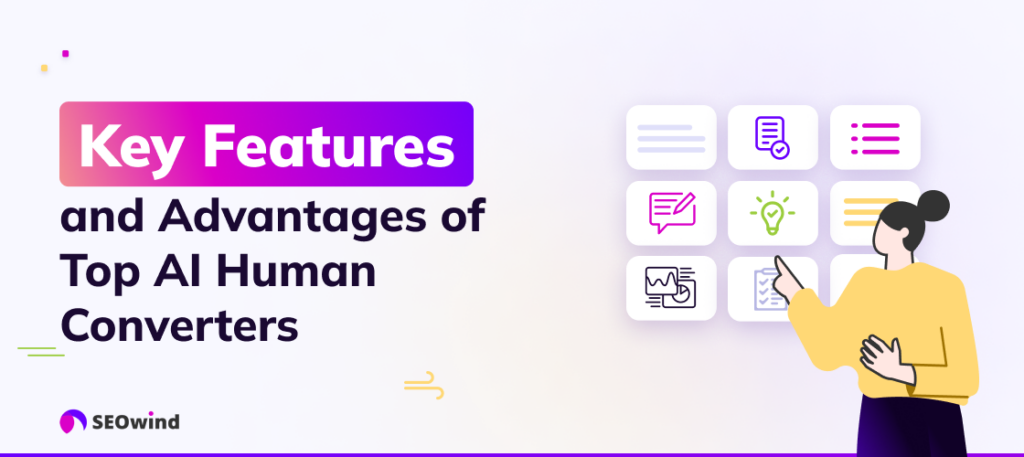
When it comes to transforming AI-generated text into human-like content, the best AI human converters offer a range of features and benefits that make the process seamless and effective. Let’s review some of the key advantages that set top-notch AI-to-human text converters apart from the rest.
Simplicity and Ease of Use
One of the most significant benefits of using a high-quality AI human converter is its user-friendly interface and straightforward process. With just a few clicks, you can input your AI-generated text and watch as the tool works its magic to transform the content. This simplicity ensures that users of all skill levels can utilize the tool effectively without the need for extensive technical knowledge or training.
Contextual Intelligence
The algorithm behind this tool understands the input context and then generates the output.
Multilingual Support and Global Accessibility
AI human converters must support multiple languages to enable users from various regions to benefit from the technology. Top converters offer multilingual support, allowing you to transform AI-generated text into English, Spanish, French, German, and more. This global accessibility ensures that the tool can be used by a wide range of individuals and businesses, regardless of their native language or target audience.
Enhanced Privacy and Security Measures
Privacy and security are of utmost importance when dealing with sensitive or confidential information. Leading AI human converters prioritize protecting user data by implementing robust security measures, such as encryption and secure data storage. These features ensure that your AI-generated text remains confidential throughout the conversion process, giving you peace of mind and allowing you to focus on creating engaging human-like content.
Cross-Device and Browser Compatibility
Flexibility is vital when using AI human converters, and the best tools offer cross-device and browser compatibility. Whether you prefer to work on your desktop computer, laptop, tablet, or smartphone, top converters ensure a seamless experience across all devices. Additionally, these tools are compatible with popular web browsers such as Google Chrome, Mozilla Firefox, Safari, and Microsoft Edge, making it easy to access and use the converter regardless of your preferred browsing platform.
Emotion and Sentiment Analysis Capabilities
To truly humanize AI-generated text, converters need to understand and incorporate linguistic nuances and emotional sentiments. Advanced AI human converters utilize sophisticated algorithms to analyze the tone and sentiment of the input text, allowing them to make appropriate adjustments and infuse the output with the desired undertones. This feature ensures that the converted text reads like a human wrote it and conveys the intended emotions and sentiments, creating a more engaging and relatable experience for readers.
High Conversion Speed and Efficiency
Time is a valuable resource, and top AI human converters understand the importance of delivering results quickly and efficiently. With their optimized algorithms and powerful processing capabilities, these tools can transform large volumes of AI-generated text into human-like content in a matter of seconds. This high conversion speed allows you to streamline your content creation process, saving you time and effort while maintaining the quality of your output.
Unlimited Utilization with No Cost
One of the most appealing aspects of using a top-tier AI human converter is the ability to utilize the tool without any cost or usage limitations. Many of the best converters offer free, unlimited access to their services, allowing you to transform as much AI-generated text as you need without worrying about hidden fees or restrictive quotas. This cost-effective solution allows individuals and businesses of all sizes to benefit from the power of AI-to-human text conversion, regardless of their budget or the scale of their projects.
By leveraging these key features and advantages, top AI human converters provide users with a seamless, efficient, and effective way to transform AI-generated text into authentic, human-like content. Whether you’re a content creator, marketer, or researcher, these tools can help you save time, improve the quality of your output, and engage your audience with more relatable and compelling content.
Comparative Analysis: Manual Conversion vs Automated Tools
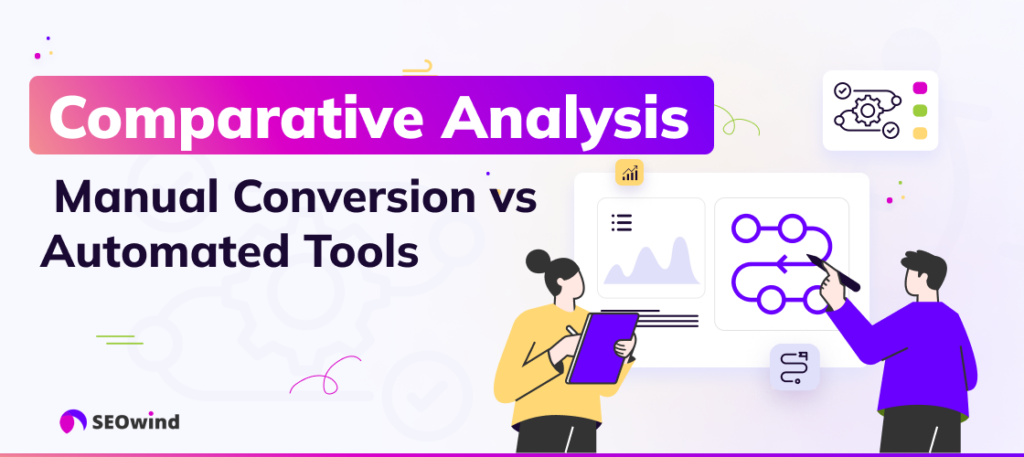
When transforming AI-generated text into human-like content, you have two main options: manual conversion or automated tools. Let’s compare these approaches, focusing on accuracy, efficiency, and preserving the original meaning.
Accuracy and Reliability Concerns
One of the primary concerns when converting AI text to human writing is maintaining accuracy and reliability. Manual conversion involves a human editor carefully reviewing and refining the AI-generated content, ensuring that the final output is coherent, grammatically correct, and reads naturally. This hands-on approach ensures a higher level of quality control and attention to detail.
On the other hand, AI human converters rely on advanced algorithms and machine learning to analyze and transform the text. While these tools have made significant strides in recent years, they don’t always capture the nuances and context of the original content as effectively as a human editor. However, as technology continues to evolve, the accuracy and reliability of automated converters will steadily improve.
Time and Resource Efficiency
When it comes to efficiency, automated tools have a clear advantage over manual conversion. With the ability to convert AI to human-like writing free of charge and in a matter of seconds, these tools can save you a significant amount of time and resources. This is particularly beneficial for content creators, bloggers, and businesses needing to quickly process large volumes of text.
Manual conversion, while more thorough, can be a time-consuming and labor-intensive process. It requires a skilled editor to meticulously review and refine each piece of content, which can be costly and may not be feasible for those with limited resources or tight deadlines.
Preservation of Content’s Original Meaning
Preserving the original meaning and intent of AI-generated text is crucial when converting it to human-like content. Manual conversion allows for a more nuanced understanding of the context and underlying message, as a human editor can interpret and maintain the intended meaning while making necessary adjustments to improve readability and engagement.
While efficient, automated tools can struggle to fully grasp the context and meaning behind the text. This leads to slight variations or inconsistencies in the converted content. However, as natural language processing and machine learning technologies improve, AI human converters will become increasingly sophisticated in their ability to understand and preserve the text’s original meaning.
Step-by-Step Guide: How to Use AI to Human Text Converters Effectively
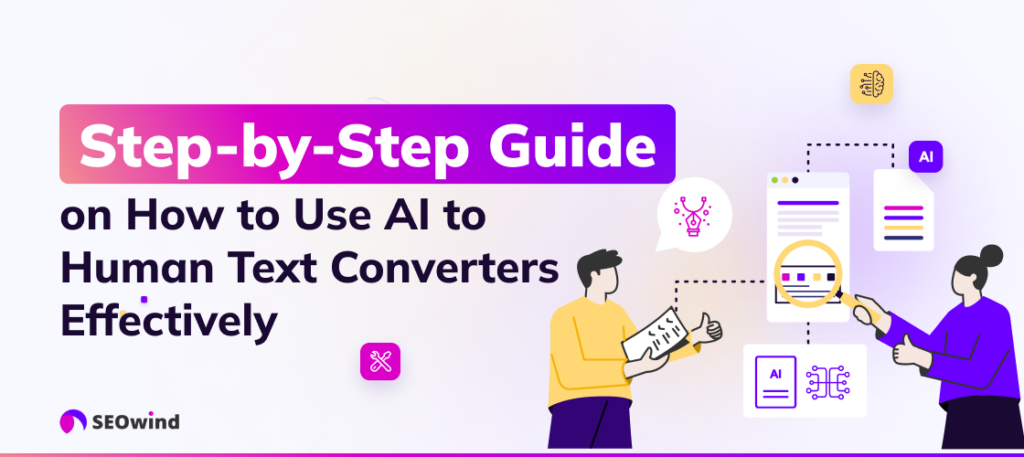
Are you ready to transform your AI-generated content into human-like text? Here is a simple, step-by-step guide that will help you use AI human converters effectively. By following these steps, you’ll be able to create content that reads as if it were written by a real person.
- Choose a reliable AI human converter: Start by selecting a reputable AI human converter that offers the features and capabilities you need. Consider factors such as ease of use, multilingual support, and compatibility with your devices and browsers.
- Prepare your AI-generated text: Gather the AI-generated content you want to convert into human-like text. Ensure the material is in a compatible format, such as plain text or a supported file type.
- Input your text into the converter: Copy and paste your AI-generated text into the input field of the AI-human converter. Some converters also allow you to upload your content directly.
- Customize conversion settings: Many AI human converters offer customization options to fine-tune the output. These may include settings for tone, formality, and language style. Adjust these settings according to your preferences and the intended audience for your content.
- Initiate the conversion process: Once you’ve input your text and customized the settings, click the “Convert” or “Transform” button to start the AI-to-human text conversion process. The converter will analyze your content and apply its algorithms to generate human-like text.
- Review and refine the converted text: After the conversion is complete, carefully review the output to ensure it meets your expectations. Check for readability, coherence, and the preservation of the original meaning. If necessary, make manual adjustments or use the converter’s editing tools to refine the text further.
- Iterate and optimize: Repeat the conversion process with different settings or sections of your content until you achieve the desired results. Experiment with various converters or customization options to find the best approach for your specific needs.
By following these steps, you’ll be able to effectively use AI human converters to transform your AI-generated content into engaging, human-like text. Remember to always review and refine the converted text to ensure the highest quality and authenticity for your audience.
Benefits of Converting AI-Generated Content into Human-Like Text
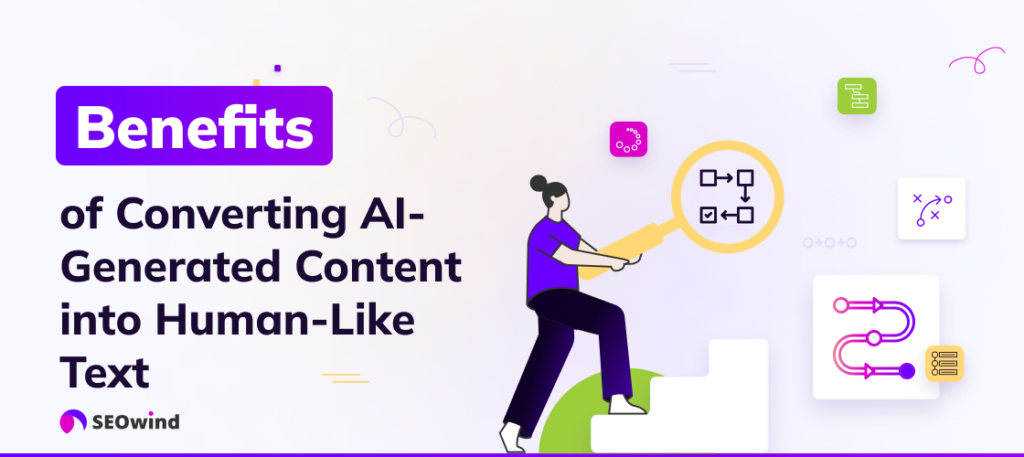
AI-generated content has revolutionized the way we create and consume information online. However, the raw output from AI models often lacks the natural flow and emotional resonance that human-written text possesses. AI human converters transform AI-generated content into text that reads as if it were crafted by a human hand. Let’s explore the key benefits of using these innovative tools to enhance your content.
Improved Readability and Emotional Engagement
One of the primary advantages of converting AI-generated text into human-like prose is the significant improvement in readability. By using an AI humanizer generator, you can ensure that your content flows smoothly and engages your audience on a deeper level. The resulting text will feature varied sentence structures, natural transitions, and a conversational tone that resonates with readers.
Moreover, human-like text can evoke emotions and establish a stronger connection with your audience. By infusing your content with a touch of personality and empathy, you can create a more immersive reading experience that keeps visitors coming back for more.
Significant Improvements in Productivity
Creating high-quality content can be time-consuming, especially when you’re striving to include a human touch. However, by leveraging AI human converters, you can streamline your content creation workflow and boost your productivity. These tools allow you to generate a solid foundation of AI-generated text and then quickly transform it into polished, human-like prose.
With such a solution, you can produce more content in less time without sacrificing quality. This increased efficiency lets you focus on other critical aspects of your business, such as strategy, marketing, and customer engagement.
Cost Savings Compared to Manual Editing
Hiring professional editors or content writers to refine your AI-generated text can be costly. Fortunately, AI human converters offer a cost-effective alternative that delivers comparable results. By utilizing these tools, you can save a significant amount of money on manual editing services while still ensuring that your content meets the highest standards of quality.
As your content needs grow, you can explore premium features or subscriptions that offer even more advanced capabilities.
Increased SEO Performance through Authentic Content
Search engines, particularly Google, have become increasingly adept at identifying and penalizing content that appears artificial or spammy. By converting your AI-generated text, you can develop content that search engines perceive as authentic and valuable. This, in turn, leads to improved search engine rankings, higher visibility, and more organic traffic to your website.
Furthermore, human-like content is more likely to earn backlinks from other reputable websites, as it provides genuine value to readers. These high-quality backlinks are crucial for boosting your site’s authority and overall SEO performance.
Avoid AI Detection Mechanisms for Content Originality
As AI-generated content becomes more common, online platforms and tools are being developed to detect and flag text that appears to be machine-generated. Using an AI human converter ensures that your content passes these detection mechanisms and is recognized as original, human-written text.
This is particularly important for content creators who rely on various platforms to distribute their work. By updating your AI-generated text to seem more human-like, you can maintain the integrity of your content and avoid potential penalties or restrictions imposed by these platforms.
In fact, Radisson increased lead-to-quote conversion by 80% using AI, demonstrating the power of AI-powered tools in enhancing content performance and driving business results.
Potential Applications and Users of AI Human Conversion Tools
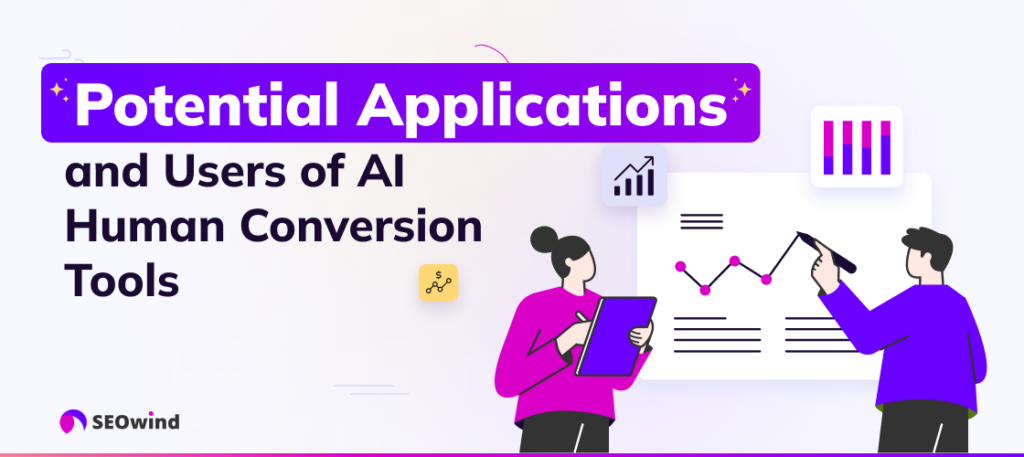
AI human converters have a wide range of potential applications across various industries and user groups. These versatile tools can significantly enhance the quality and efficiency of content creation, research, marketing, and customer service. Let’s discuss some of the key users who can benefit from AI-to-human text conversion.
Content Creators, Bloggers, and Copywriters
AI human converters can be a game-changer for content creators, bloggers, and copywriters. These tools allow them to quickly generate high-quality, human-like content from AI-generated text, saving time and effort in the writing process. These tools also ensure that content creators maintain a consistent publishing schedule and keep their audience engaged.
The ability to transform AI-generated text into unique, human-like content opens up new possibilities for creative exploration and experimentation.
Academic Researchers and Students
In the academic world, AI human converters can be invaluable tools for researchers and students. Researchers often need to process large volumes of text data, such as academic papers, reports, and transcripts. AI human converters can quickly transform AI-generated summaries or extracts into readable, human-like text, making it easier to analyze and draw insights from the data.
For students, AI human converters can be particularly helpful when working on assignments and research projects. These tools can assist in paraphrasing and reformulating AI-generated text, ensuring that the final output is original and free from plagiarism concerns. Additionally, AI human converters can help students improve the readability and coherence of their writing, leading to better grades and academic success.
Marketing Professionals and Advertisers
AI human converters can be powerful allies to those who operate in the fast-paced world of marketing and advertising. Marketing professionals often need to create compelling ad copy, product descriptions, and promotional content quickly and efficiently. By leveraging AI-generated text and converting it into human-like language, marketers can save time and resources while still delivering high-quality, engaging content.
AI human converters can also help marketers adapt their content for different target audiences and platforms. By fine-tuning the conversion process, marketers can ensure that their messages resonate with specific demographics and are optimized for various channels, such as social media, email, or web copy.
Customer Service Automation
Customer service is another area where AI human converters can significantly impact. Many businesses rely on chatbots and virtual assistants to handle customer inquiries and support requests. However, the AI-generated responses provided by these systems can sometimes feel robotic and impersonal.
By integrating AI human converters into customer service automation, businesses ensure that customers receive natural, empathetic, and human-like responses. This can lead to improved customer satisfaction, as users feel that their concerns are being addressed in a more personalized and caring manner.
Additionally, AI human converters can help businesses maintain a consistent brand voice across all customer touchpoints. By converting AI-generated text into language that aligns with the company’s tone and style guidelines, businesses can create a seamless and cohesive customer experience.
Popular AI Human Converters
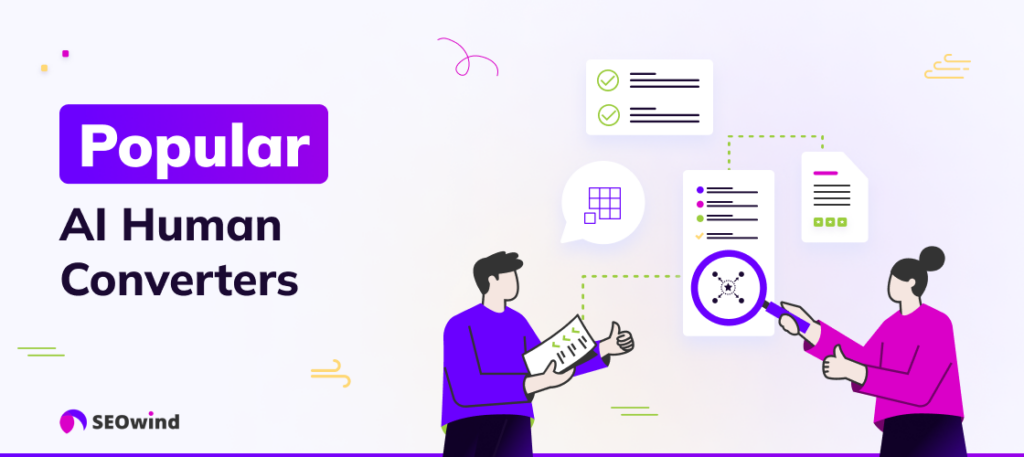
Several AI-to-human text converters have recently emerged as go-to options, each with unique features and benefits. Let’s take a closer look at some of the most popular options available today.
SEOwind GPT – Humanize AI and Avoid AI Detection [Free]
GPT Humanize AI & Avoid AI Detection isn’t just your run-of-the-mill editing program. It’s designed to turn those flat, robotic phrases into something with personality, something that feels a bit more like a conversation and a lot less like a machine.
So, what makes this tool a standout? For one, it knows how to bring a bit of life to even the most mundane content. It shakes things up by playing with sentence flow, tossing in casual phrases, and occasionally going off-script with a bit of humor or an anecdote. Basically, it makes your content sound like it was written by a real person who has quirks, opinions, and maybe a tendency to ramble now and then. The result? You get content that flows like a friendly chat, is easier on the eyes, and (bonus!) sneaks past those AI detectors that are quick to spot formulaic language.

Quillbot AI
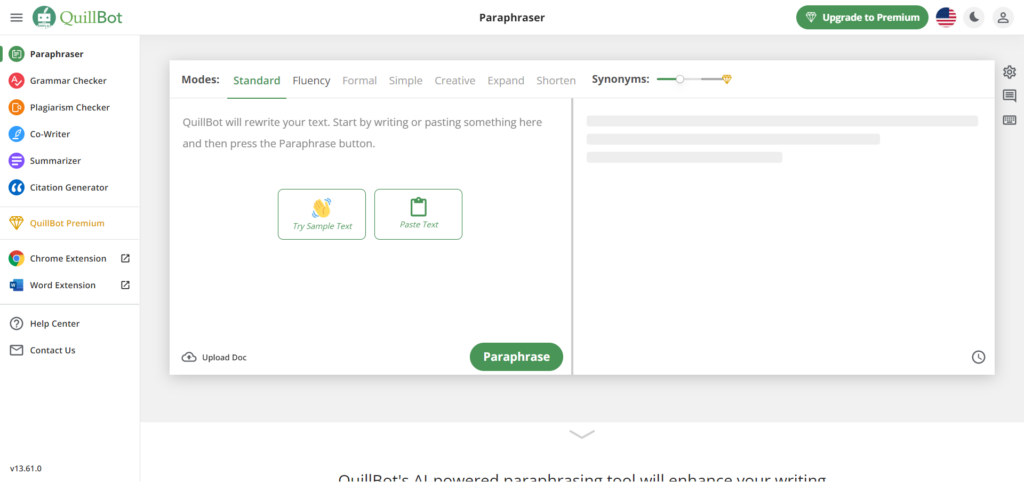
- Pros: Quillbot AI offers a user-friendly interface and advanced paraphrasing capabilities. It provides multiple modes for rephrasing text, allowing users to maintain the original meaning while enhancing readability. The tool also offers a free version with generous word limits.
- Cons: While Quillbot AI excels at rephrasing, it may struggle with more complex or technical content. Additionally, the free version has limited features compared to the premium subscription.
Wordtune
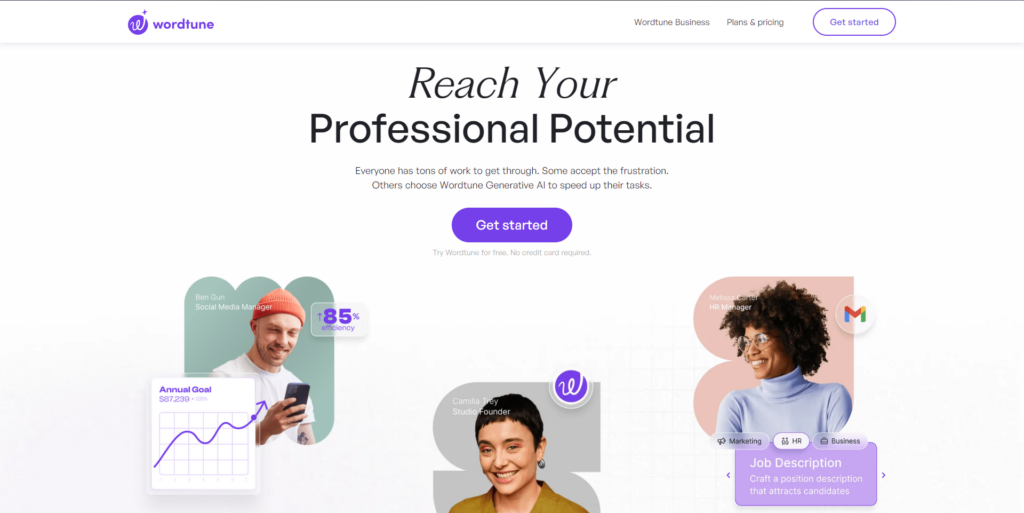
- Pros: Wordtune leverages powerful AI algorithms to understand the context and suggest more natural, human-like rephrasing options. It seamlessly integrates with various writing platforms, making it convenient for users to optimize their content on the go.
- Cons: Wordtune’s free version has a limited number of daily rewrite suggestions, which may not be sufficient for users with high-volume needs. Some users have also reported occasional inconsistencies in the suggested rephrasing.
SEOwind – Write human like AI content
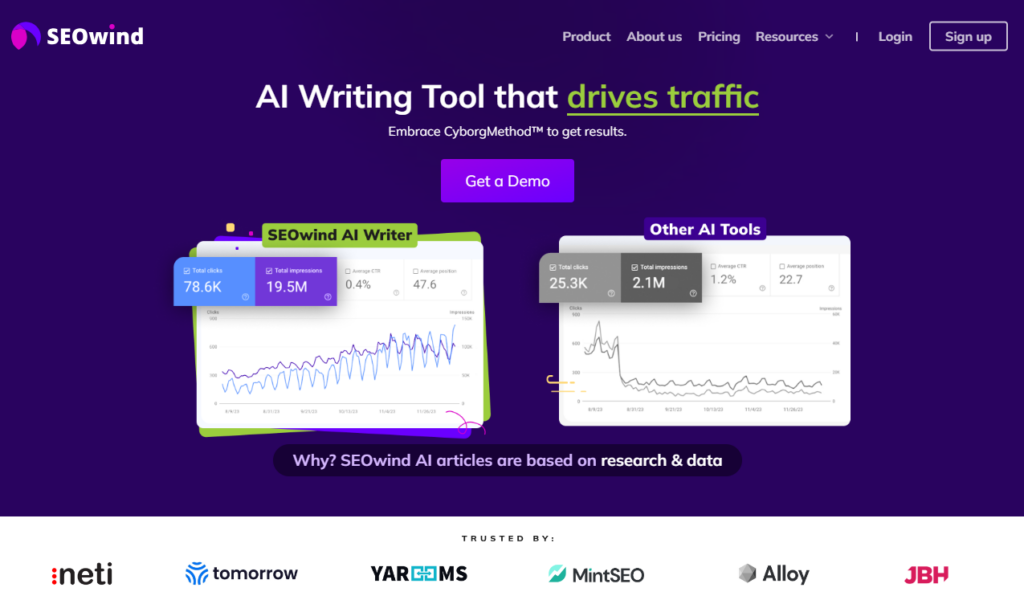
Although we’re not a classic AI Human Converter, this AI writing tool writes content that highly resembles content written by humans. It invests heavily in content research, collecting all the data about:
- your company – your brand voice, company and product information, your company website, keywords it ranks for, and target audience,
- Google SERPs – top performing content on chosen keywords, with detailed analysis of its content, structure, length, keywords, title and meta descriptions,
- user questions from People Also Ask, Quora, and Reddit,
- your expertise and opinions on the topic you’re writing about,
- stats and quotes to enrich the article.
Then, SEOwind uses multiple AI agents to pre-process the data and write as human alike as possible.
When choosing an AI human converter, you must consider your specific needs, budget, and the type of content you’ll be working with. While each tool has its strengths and weaknesses, they all aim to bridge the gap between AI-generated and human-like text. By leveraging these converters, you can save time and effort in transforming your AI-powered content into engaging, natural-sounding text that resonates with your target audience. So, explore the options, take advantage of free trials, and find the AI-to-human converter that best suits your requirements.
Practices for Reviewing and Refining Converted Text
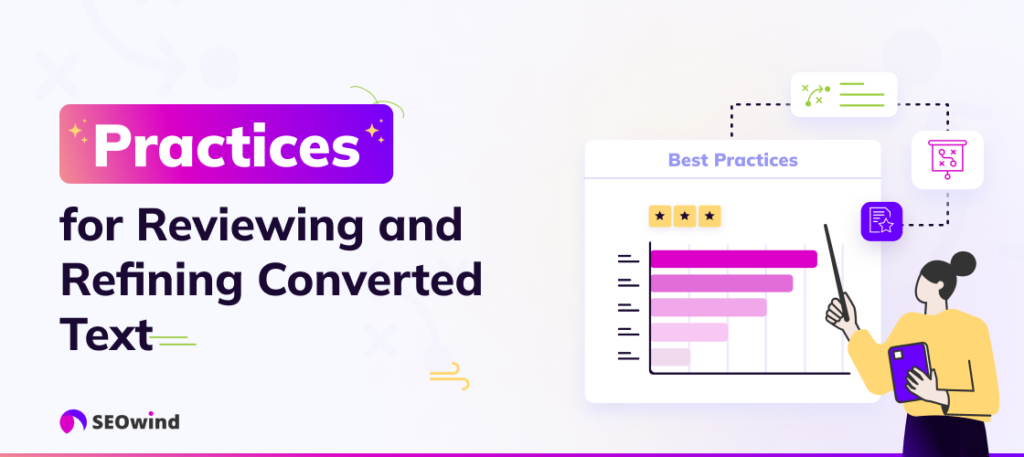
Once you’ve converted your AI-generated text into a more human-like form using an AI human converter, you’ll need to review and refine the output to ensure it meets your desired standards. Here are some best practices to follow.
- Read through the converted text carefully, paying attention to the overall flow, coherence, and readability. Does the text sound natural and engaging? Are there any awkward phrases or sentences that need smoothing out?
- Check for any grammatical errors, spelling mistakes, or punctuation issues that may have slipped through during the conversion process. While AI human converters are generally quite accurate, it’s always a good idea to proofread the text to catch any minor errors.
- Evaluate the converted text’s tone and style. Does it align with your brand’s voice and the intended audience? If necessary, make adjustments to ensure the text strikes the right balance between informality and professionalism.
- Assess the clarity and conciseness of the converted text. Are the ideas expressed clearly and succinctly? Look for opportunities to streamline the text by eliminating unnecessary words or phrases that don’t add value to the overall message.
- Consider the emotional impact of the text. Does it evoke the desired response from your readers? If you want a specific emotional tone (e.g., empathy, excitement, urgency), make sure the language and storytelling techniques used in the converted text support that goal.
- Fact-check any statistics, quotes, or references included in the text to ensure accuracy and credibility. Double-check the original sources and make any necessary corrections or updates.
- Have a colleague or editor review the converted text to provide a fresh perspective and catch any issues you may have overlooked. Collaborative editing can help refine the text and ensure it meets the highest quality standards.
By consistently following these practices, you can ensure that your AI-converted text maintains a high level of readability, engagement, and overall effectiveness in connecting with your target audience. Remember, the goal is to create content that reads as if it were written by a human, so reviewing and refining the text is crucial.
Guide to Avoiding Common Pitfalls in Text Conversion
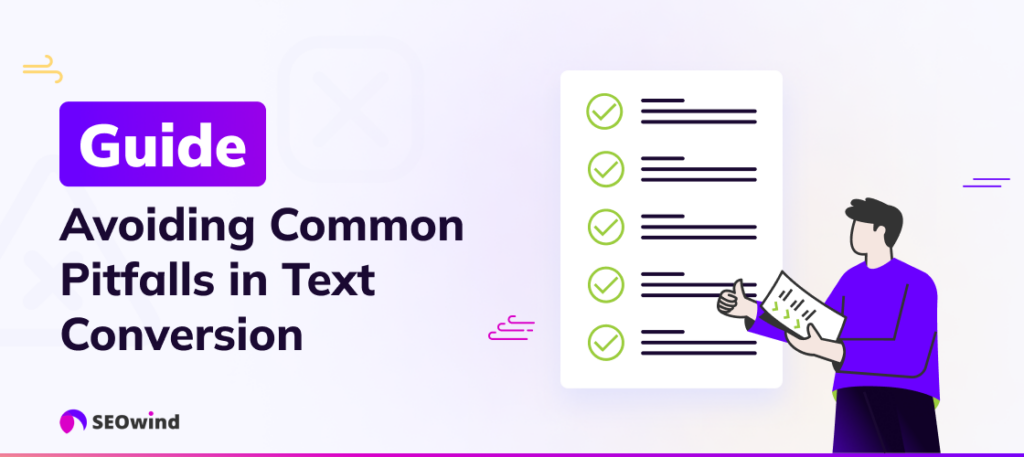
When using AI human converters to transform AI-generated text, it’s essential to be aware of potential pitfalls that compromise the quality and effectiveness of your converted text. By understanding and avoiding these common mistakes, you ensure your AI-to-human text conversion process yields the best possible results.
Relying Too Heavily on AI Converters
One of the most significant traps to avoid is relying too heavily on the AI converter without performing a thorough manual review of the output. While these tools are incredibly powerful and can save you a great deal of time and effort, they are not infallible. It’s crucial to carefully read through the converted text to identify any errors, inconsistencies, or areas that may require further refinement.
Failing to Provide Sufficient Context
Another common mistake is failing to provide the AI converter with sufficient context or background information about your intended audience, tone, and purpose. The more context you can give the tool, the better it will be at generating text that aligns with your goals and resonates with your target readers. Take the time to input detailed instructions and guidelines to help the converter produce the most relevant and compelling content possible.
Being Mindful of Potential Biases and Inaccuracies
In addition, be mindful of the potential for the AI converter to introduce unintended biases or inaccuracies into the text. While these tools are designed to mimic human language patterns and styles, they can sometimes pick up on and amplify certain biases found in the training data.
Considering Coherence and Flow
Finally, don’t forget to consider the overall coherence and flow of the converted text. Sometimes, AI converters can generate sentences or paragraphs that, while grammatically correct, may not fit seamlessly into the larger context of your content. Pay close attention to the transitions between ideas and the logical progression of your arguments to ensure that your AI-generated text reads smoothly and makes sense to your audience.
Maintaining Cultural Sensitivity
One of the primary challenges in AI-to-human text conversion is maintaining cultural sensitivity. AI models are trained on vast amounts of data from various sources, which may not always account for cultural nuances and differences. This can lead to text that may be inappropriate or offensive in specific contexts.
To address this issue, AI human converters should incorporate cultural awareness into their algorithms. This can be achieved by training the models on diverse datasets that include culturally specific language and context. Additionally, involving human editors from different cultural backgrounds in the review process can help identify and correct culturally insensitive content.
Avoiding Loss of Context or Meaning
Another significant challenge is ensuring that the converted content retains the original context and meaning. AI models may struggle to understand the nuances and subtleties of language, leading to a loss of context or misinterpretation of the intended message.
To mitigate this challenge, AI human converters should employ advanced natural language processing techniques that help the tool better understand the context and semantics of the material. This includes leveraging deep learning models that capture the relationships between words and phrases and incorporating domain-specific knowledge to improve understanding.
Furthermore, implementing a feedback loop that allows users to provide input on the converted text can help refine the models and improve their ability to preserve context and meaning over time.
Ensuring Content Authenticity
With the increasing use of AI-generated content, there is a risk that AI human converters inadvertently produce text that is similar to existing content, raising concerns about plagiarism and originality.
AI human converters should incorporate plagiarism detection mechanisms into their workflows. This can involve comparing the converted text against a database of existing content to identify any potential similarities. Additionally, encouraging users to review and edit the converted text can help ensure the final output is unique and authentic.
It’s worth noting that, according to a Reddit post, AI detectors have about a 7% failure rate on native-speaker essays and 80% on non-native essays. This highlights the importance of using AI human converters in conjunction with human oversight to ensure the quality and authenticity of the converted text.
By addressing these critical challenges head-on and implementing effective solutions, AI human converters can continue to transform AI-generated text into human-like content while maintaining cultural sensitivity, preserving context and meaning, and ensuring content authenticity.
FAQ
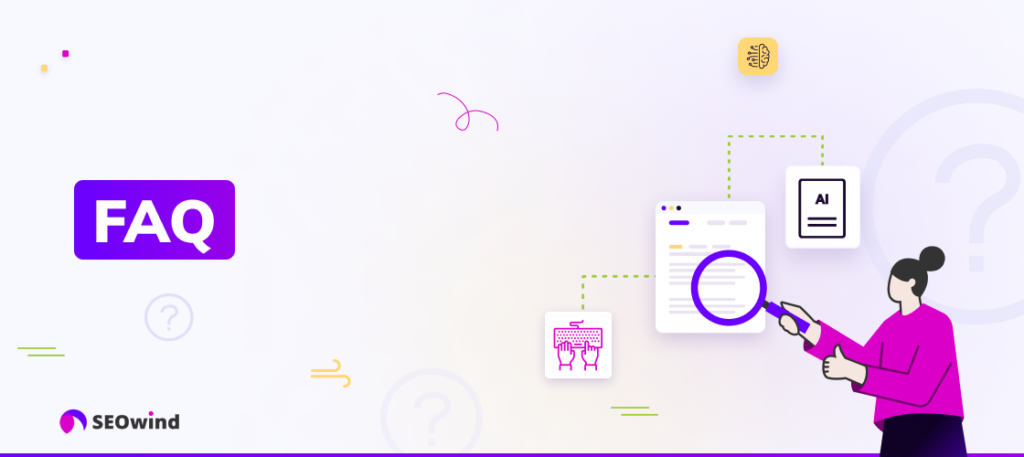
Distinguishing Between Various Types of Converters
One of the most frequent questions we encounter is, “What sets different AI human converters apart?” While all these tools transform AI-generated text into more human-like content, they can vary in their approach and specific features.
Some key distinctions to look for include:
- The underlying technology (e.g., machine learning algorithms, natural language processing techniques)
- Supported languages and dialects
- Customization options for tone, style, and formality
- Integration with other tools or platforms
- Pricing models and usage limits
Understanding these differences allows you to select the tool that best aligns with your unique needs and preferences.
How do I convert AI-provided text to human text?
Now that you know how to choose the right converter, let’s walk through the typical process of transforming AI-generated content into human-like text:
- Begin by selecting your preferred AI human converter.
- Once you’ve accessed the converter, you’ll typically find a text input field where you can paste your AI-generated content. Some tools may also support file uploads for bulk conversions.
- Depending on the converter, you may have the option to customize settings such as tone, formality, or target audience. Adjust these as needed to ensure the output aligns with your desired style.
- Click the “Convert” or “Humanize” button to initiate the transformation process. The time required may vary based on the length and complexity of your text.
- Review the converted text carefully. While AI human converters can significantly improve readability and engagement, it’s always wise to read through them yourself.
- Export or copy the transformed text for use in your desired application, whether it’s a blog post, academic paper, or marketing material.
By following these steps and leveraging the power of AI to human text converters, you can efficiently create content that resonates with your target audience on a deeper, more authentic level.
